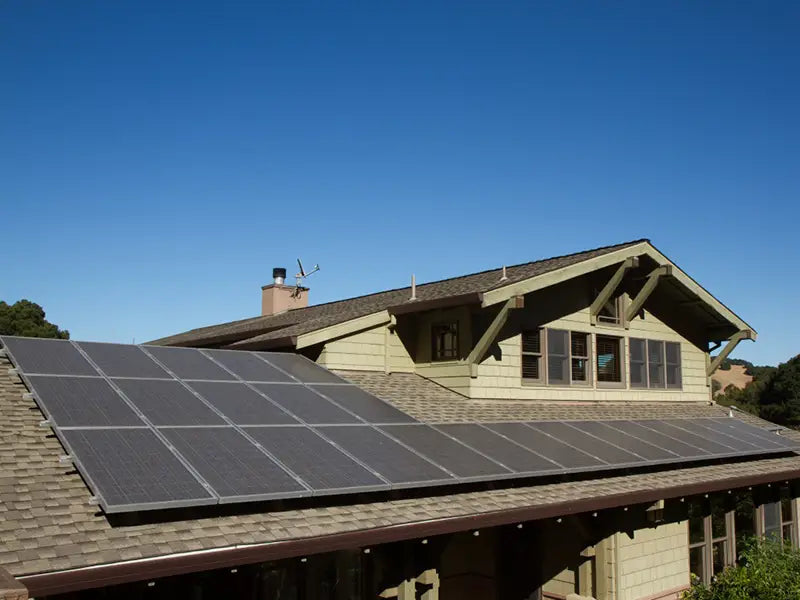
Main content:
Using a microprocessor as the detection and control core of the photovoltaic power generation system controller has three advantages: high performance and price ratio; high detection and control accuracy; high operational reliability and flexibility. Therefore, using the microprocessor as the core of the system controller of the photovoltaic power generation system is the development direction of the controller in the future.
Here is a brief introduction to a 2kW solar photovoltaic power generation system using MCS51 series single chip microcomputer as the control and detection core.
1. Charging control of the system controller
The battery is a small and medium-sized photovoltaic power generation system, especially a photovoltaic power generation system that operates independently. The system controller is an indispensable energy storage device. The cost of the system controller accounts for 15% to 20% of the total system cost, so the service life of the battery is prolonged. It will be directly related to system operation, maintenance cost and system reliability.
The system adopts the incremental control method to control the charging process of the battery by the solar cell array, so as to limit the charging voltage of the battery to not reach a harmful level and ensure the life of the battery. The figure below shows the charging control principle of this system, which divides the 2kW solar cell array into 8 channels, that is, each control increment is 12.5% of the total. After summer comes, the sunshine hours are getting longer and the battery is close to full state. Assuming that the load current is small and constant during the day, when the solar cell current increases, the battery voltage also gradually increases. When the voltage reaches the maximum charging voltage of the battery, the system controller will start to cut off one solar cell array, and the charging voltage drop will decrease, so the battery voltage will be lowered and will be separated from the limit voltage.
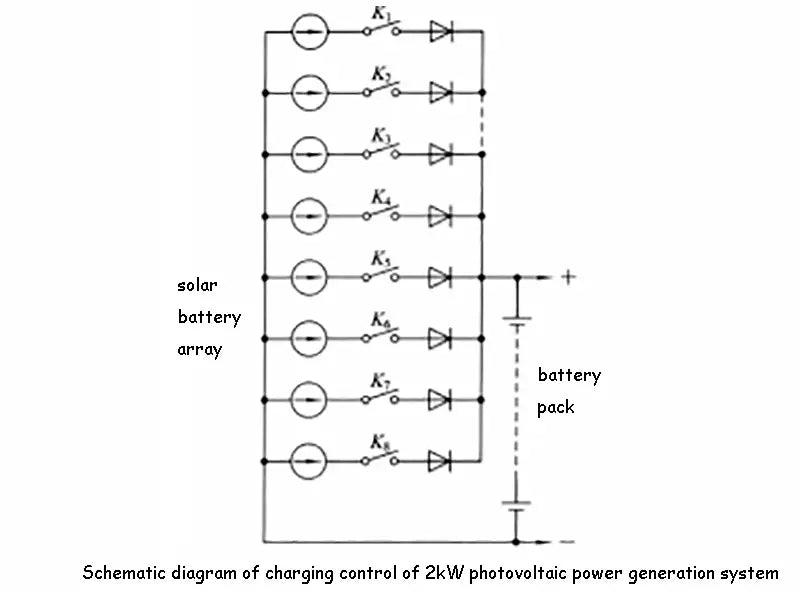
As the sun rises, the solar cell current increases, and the battery begins to fill up gradually. When the voltage reaches the highest limit again, the system controller acts to cut off another solar cell array, causing the charging current to jump again. And so on, always protect the battery voltage in the floating state. As the charging current of the solar battery decreases, the battery voltage drops, and each charging branch is put into charging separately again until the charging process of one day is completed, and the best charging effect of the battery is realized.
2. Detection of solar cell array characteristics and microcomputer system
The photovoltaic curve of a solar cell is the out-of-load characteristics of a solar cell under a certain light intensity and a certain temperature, as shown in the figure below.
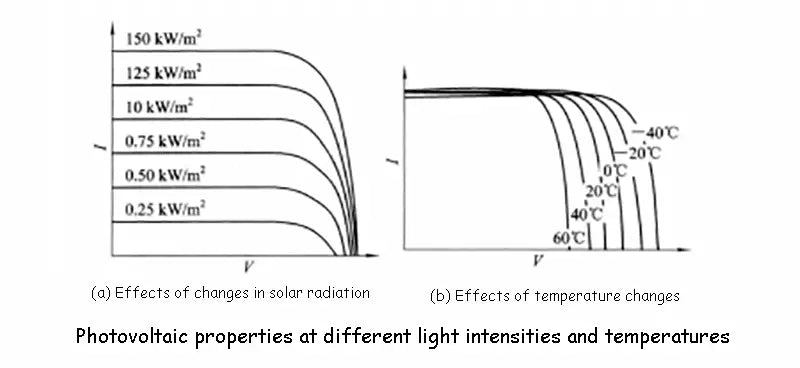
Photovoltaic characteristic curve is the basis for the analysis of various indicators such as the optimal design of the photovoltaic power generation system, the reliability of the operating state, the service life and the operating cost. Under natural conditions, since the intensity of sunlight radiated to the solar cell array is constantly changing with the cloudiness of the sky, the transparency of the atmosphere and the incident angle of the sun, the temperature of the cell panel also varies with the radiation, ambient temperature and wind power. Therefore, the ampere-volt characteristic curve under natural conditions must be completed in a very short moment, so that the influence of light intensity and temperature changes may be ignored.
The development of modern electronic technology, especially the use of microcomputer technology, has made it possible to complete the acquisition and processing of a large amount of data in an instant. The following figure shows the hardware block diagram of the microcomputer system.

The system of the system controller adopts the single-chip microcomputer as the core of the system controller detection. Because of the unique hardware structure of the single-chip microcomputer, the high-efficiency instruction system and the multi-access 1/O data operation and processing capabilities, it can be used as a high-efficiency system. The process control machine can also become an effective data processor, so it is widely used in industrial control, office automation equipment, intelligent instrumentation and other fields.
From a practical point of view, the system of the system controller has also fully considered in terms of control, system detection, and anti-interference. For example, in addition to general power distribution control, the load can also realize timing control such as timing on and timing off. System detection includes the detection of main parameters, such as the detection of charging current, discharge current, battery voltage, etc.; at the same time, it can also detect some environmental parameters, such as environmental temperature, solar radiation intensity on the solar panel, temperature etc. to be detected. In terms of anti-interference, in addition to taking measures such as isolation and shielding on the hardware, the system controller of this system also adds a program supervision circuit to track and monitor the operation of the program at any time to prevent the program from malfunctioning and entering an infinite loop.
In addition, the system of the system controller also considers to reserve various spare interfaces, such as communication interface, standby power start interface, wireless alarm interface, etc., to meet various needs.
The DC power supply used in the single-chip microcomputer system, printing plotter and analog amplifier circuit of the system controller system is powered by the lead-acid battery in the system, and the switching voltage-stabilizing power supply and voltage-stabilizing integrated circuit are used to provide stable DC power, which has power consumption. Low, reliable, small size and so on.
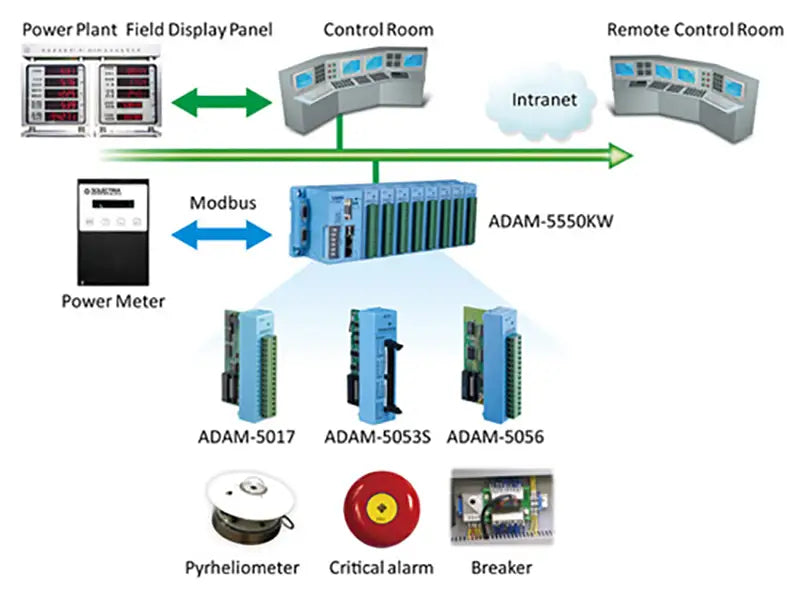
The system of the system controller adopts the single-chip microcomputer system as the control and detection core, so it has strong function, small size, reliable operation, simple operation, low price and strong practicability, and is suitable for popularization and use. The following briefly introduces the main functions of the system controller of this system:
① The system of the system controller is based on the requirements of real-time control and detection, and an accurate second generator is composed of components. Through the accumulation of seconds, the timing of minutes, hours, days, months and years can be achieved, and the calculation of leap years and leap months can be automatically completed, making the system time control.
②After the system of the system controller is in automatic operation, various initial values and states can be set and modified, such as the setting and modification of the calendar clock, battery capacity, charging and load status, etc.
③ The system of the system controller has strong control functions, including charging control, distribution control, timing control, and backup power start control.
④The main parameters that the system controller of the photovoltaic power generation system needs to detect are: In addition to detecting the above-mentioned main system parameters, the system of the system controller may also control the electronic load to complete the photovoltaic characteristics of the 2kW solar cell array or its sub-arrays. Detection, that is, collecting 100 pairs of I-U values, and plotting the I-U value curve.
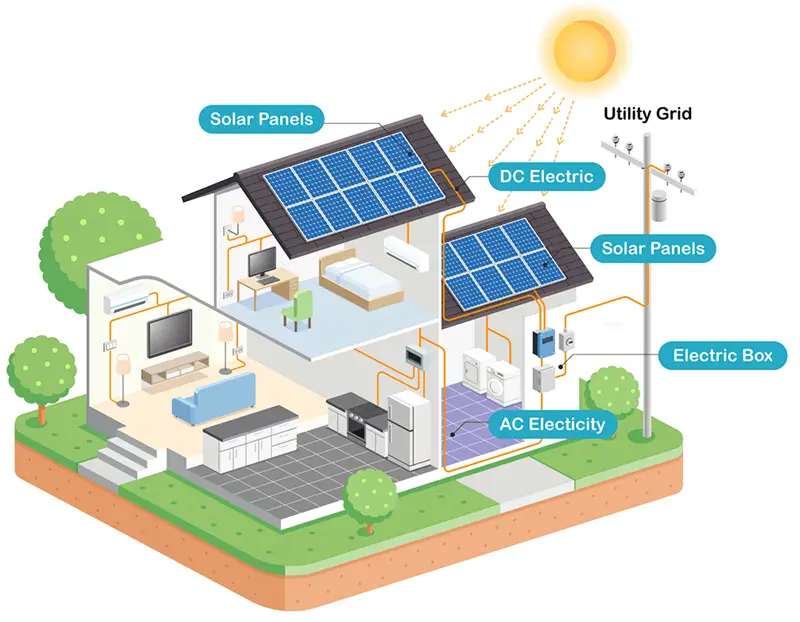
⑤ On the basis of the collected data, the system of the system controller can perform scale transformation, digital transformation and multi-byte numerical calculation, etc. and output the results. The main calculation parameters are: charging ampere-hours, discharging ampere-hours, maximum output power of the solar cell array, fill factor, etc.
⑥ The system of the system controller has a good display function, and all system parameters and states can be output by an 8-bit display. Through the drawing and printing function, all system parameters and states can be printed out by a small four-color printing plotter; the photovoltaic characteristic curve of the photovoltaic cell array can also be drawn and output, and four different colors can be drawn simultaneously in the same coordinate. -U characteristic curve for comparison. In addition, the system of this system controller can also output printed greetings, date clock, etc.
⑦ The system of the system controller has a self-test function. When the main components of the system controller fail or operate abnormally, such as the open circuit of the photoelectric array or the battery voltage is too low, it can automatically start the alarm and indicate the fault location. So that the staff can repair it in time.
⑧ The system of this system controller can automatically complete all the above functions after setting various initial values and states. If there is no modification operation, the system can run according to the initial value and state automatically set by the program after power-on.
⑨ The system of the system controller can complete various control and detection work on the spot according to the instructions issued by the keyboard. When the microcomputer system of the system is in the maintenance period, the charging and load distribution control can be completely manually controlled through the switch layout. .
⑩ In addition, the system of this system controller also has the function of keyboard blocking, that is, when the system enters the automatic operation state, the program will implement software blocking on the keyboard, and the system will only open the keyboard operation control after re-entering the password. In this way, non-operator operation and unauthorized modification of the system operating state can be effectively avoided. The lock password can be written into the program storage once by the designer according to the user's requirements, or can be modified and set by the user's operator after being programmed. Secondly, this system has an automatic reset function, that is, in addition to the general power-on reset and manual key reset, the single-chip microcomputer system also has an automatic reset circuit for program supervision. Again, this system has a communication function, because the single-chip microcomputer system used is equipped with an RS-232 serial port. The communication interface can easily communicate with the PC and transmit data and instructions, and can also realize multi-computer communication.
Read more: Contactless Voltage Regulators in Photovoltaic Power Generation Systems